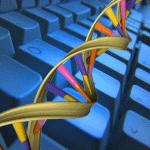Bioinformatics
|
25 july 2015 13:33:24 |
| Mapping side chain interactions at protein helix termini (BMC Bioinformatics) |
|
Tweet Background:
Interactions that involve one or more amino acid side chains near the ends of protein helices stabilize helix termini and shape the geometry of the adjacent loops, making a substantial contribution to overall protein structure. Previous work has identified key helix-terminal motifs, such as Asx/ST N-caps, the capping box, and hydrophobic and electrostatic interactions, but important questions remain, including: 1) What loop backbone geometries are favoured by each motif? 2) To what extent are multi-amino acid motifs likely to represent genuine cooperative interactions? 3) Can new motifs be identified in a large, recent dataset using the latest bioinformatics tools?
Results:
Three analytical tools are applied here to answer these questions. First, helix-terminal structures are partitioned by loop backbone geometry using a new 3D clustering algorithm. Next, Cascade Detection, a motif detection algorithm recently published by the author, is applied to each cluster to determine which sequence motifs are overrepresented in each geometry. Finally, the results for each motif are presented in a CapMap, a 3D conformational heatmap that displays the distribution of the motif’s overrepresentation across loop geometries, enabling the rapid isolation and characterization of the associated side chain interaction. This work identifies a library of geometry-specific side chain interactions that provides a new, detailed picture of loop structure near the helix terminus. Highlights include determinations of the favoured loop geometries for the Asx/ST N-cap motifs, capping boxes, “big” boxes, and other hydrophobic, electrostatic, H-bond, and pi stacking interactions, many of which have not been described before.
Conclusions:
This work demonstrates that the combination of structural clustering and motif detection in the sequence space can efficiently identify side chain motifs and map them to the loop geometries which they support. Protein designers should find this study useful, because it identifies side chain interactions which are good candidates for inclusion in synthetic helix-terminal loops with specific desired geometries, since they are used in nature to support these geometries. The techniques described here can also be applied to map side chain interactions associated with other structural components of proteins such as beta and gamma turns. |
| 126 viewsCategory: Bioinformatics |
 Three minimal sequences found in Ebola virus genomes and absent from human DNA (Bioinformatics) Three minimal sequences found in Ebola virus genomes and absent from human DNA (Bioinformatics)Complex regulation of Hsf1-Skn7 activities by the catalytic subunits of PKA in Saccharomyces cerevisiae: experimental and computational evidences (BMC Systems Biology) 
|
| blog comments powered by Disqus |
MyJournals.org
The latest issues of all your favorite science journals on one page
The latest issues of all your favorite science journals on one page



